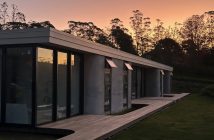A recent BRANZ report makes the case for involving facilities management (FM) professionals early in the building design phase

The report found that early engagement of FM practitioners in planning and development, particularly in relation to building whole-of-life performance as well as whole-of-life costs, has potential to add significant value.
“Early FM engagement contributes towards the three realms of building quality – functionality, durability and performance. FM practitioners use their operational knowledge to ensure buildings are designed in a way that can be sustainably and safely managed.”
Jointly funded by the Facilities Management Association of New Zealand (FMANZ) and the BRANZ Building Research Levy, the Facilities Management Industry Census canvassed 255 people working in the industry via an online survey, including 168 facilities management practitioners and 32 ‘purchasers’ (FM clients and/or building owners). BRANZ researchers Nick Brunsdon and Anne Duncan also carried out follow-up interviews around FM involvement in design and construction.
“Problems with building quality have long been documented,” says FMANZ CEO Gillian Wess. “This report suggests that early involvement from facilities managers in the design phase provides an avenue to positively influence the functionality, durability and performance of buildings and save money.”
Practitioners and purchasers both recognised that early pre-occupancy engagement of facilities managers in the development of new facilities was relatively uncommon. However, there is growing emphasis on the value of FM in the design of a facility, taking into account the operational requirements for maintenance, the needs of users and considerations around how the space is used.
“There is considerable effort in pushing this practice under the banner of ‘soft landings’, in which FMs are involved from design through to occupancy, ensuring a soft landing when the building is occupied. The premise of this approach included reduced operational costs for facilities through a focus on whole of life costs.”
Several participants identified that typical building procurement practice effectively prevented such an approach, “as upfront costs were over-emphasised in tendering processes, to the detriment of building quality and operational expenditure”.
When FMs were engaged early, it was the result of specific circumstances, generally strong economic drivers that took account of whole-of-life costs and quality. This was often evident in the Private-Public Partnership (PPP) model in which the private organisation responsible for delivering the facility was also responsible for the ongoing operation of the facility. In some cases, these private organisations were responsible for handing over the building free of defects at the end of their contract term, typically 25 years. Participants noted that compared to traditional procurement, this creates strong incentive for specifying more durable materials such as claddings.
Other circumstances leading to FM involvement included long term building occupiers with a financial stake in the building or fitout.
The facilities managers interviewed by the authors had been involved in various stages of development prior to occupancy. Their initial input was into the design brief, using their understanding of building occupants to inform technical requirements for the building. This includes mode of working, habits, density, electrical loading and consideration of operational needs such as cleaning cupboards or loading docks.
Facilities managers also play an intermediary role between the design team and occupants. This is a bidirectional function, turning occupant behaviours and expressed desires into technical requirements and communicating the functional design elements to occupants as well as setting appropriate expectations of the new facility. This was identified as being effective in improving quality by reducing the need for post occupancy adjustments or retrofit, which are common in new facilities due to misunderstanding of occupant requirements by designers or misunderstanding of the design by occupants.
In the detailed design stage, facilities managers provided input into product choices with particular consideration of how occupants will use the space and features; what maintenance and renewal activities will be required and how they will be performed; how products will perform with respect to durability and energy efficiency.
There was a strong theme of seeking the operational expertise of facilities managers to assist embedding maintenance into the design, in order to reduce operational costs and give effect to safety in design principles.
“Through the detailed design stage, FM input ensures that durability and performance requirements can be feasibly met and supported through maintenance,” the report says. “As new facilities progress into occupancy, facilities managers in their traditional operational role manage the performance and durability into the long term.”
The authors propose that greater implementation of early FM engagement could be achieved through greater professionalism of the industry, greater awareness of its value amongst purchasers, and adoption of advanced procurement models which recognise whole of life costs.
“Procurement models with a heavy focus on upfront cost are a strong barrier at present but these are being investigated by the Industry Transformation Agenda and the BRANZ quality research programme.”
The Facilities Management Association of New Zealand (FMANZ) represents New Zealand’s community of Facilities Management professionals and supports education, networking and knowledge sharing for members and member organisations. www.fmanz.org



